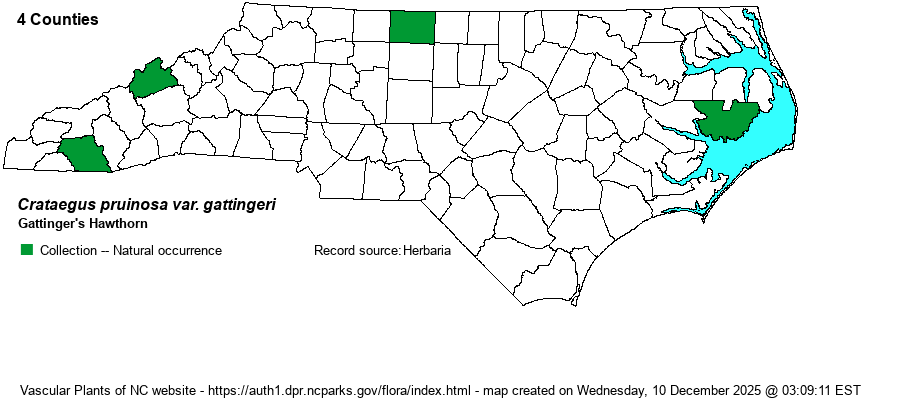| Author | Ashe | |
| Distribution | Reportedly (in Lance 2014 and in Weakley 2018) primarily in the Mountains and Piedmont, but sparingly in the Coastal Plain. Exact details of the distribution are not well known, and the range map below is certainly very incomplete and rather "meaningless" at the present time.
Weakley (2018) gives the overall range as “PA to n. GA, w. to MO, AR; extending s. into coastal plain in AL, MS, LA, AR.”
| |
| Abundance | Probably uncommon or infrequent in the Mountains and Piedmont, and likely rare in the Coastal Plain. Details of its rarity or abundance are poorly known, though Weakley (2018) indicates "uncommon" for the Mountains and Piedmont, and "rare" in the Coastal Plain, on his province map. As the NC NHP does not have the species in its database, this website gives an S3? state rank for it. | |
| Habitat | This is a species of dry, upland forests, often where rocky. But, it also occurs in old fields and abandoned pastures. | |
| Phenology | Blooms in April and May, and fruits in September and October. | |
| Identification | This is a large shrub or small tree that looks closely like several other species, especially C. pruinosa, which Lance (2014) considers to be the same species as C. gattingeri. Gattinger’s Hawthorn has somewhat triangular leaves, with strong serrations and often two distinct side lobes, quite a bit like a leaf of Red Maple (Acer rubrum). However, this taxon has a longer and more tapered terminal lobe than nearly all other hawthorns. In addition, the anthers are smaller than those of C. pruinosa. See Lance (2014) for photos of this taxon, and see Weakley (2018) for further characters to separate this taxon from others. | |
| Taxonomic Comments | Lance (2014), an expert on the subject of hawthorns, lists this taxon as a variety of C. pruinosa – i.e., as C. pruinosa var. gattingeri. Most other references do, as well. However, Weakley (2018) does list this as a good species. In 2022, Weakley moved this taxon back to a variety of C. pruinosa. RAB (1968) had this taxon lumped in with many others under the “umbrella” C. flabellata, which is no longer a valid taxon itself (as it has been divided now into many “new” species). NatureServe has conservatively given it a questionable taxonomy Global Rank, of G3G5Q.
| |
| Other Common Name(s) | None | |
| State Rank | [S3?] | |
| Global Rank | G5T3T5Q | |
| State Status | | |
| US Status | | |
| USACE-agcp | | |
| USACE-emp | | |

